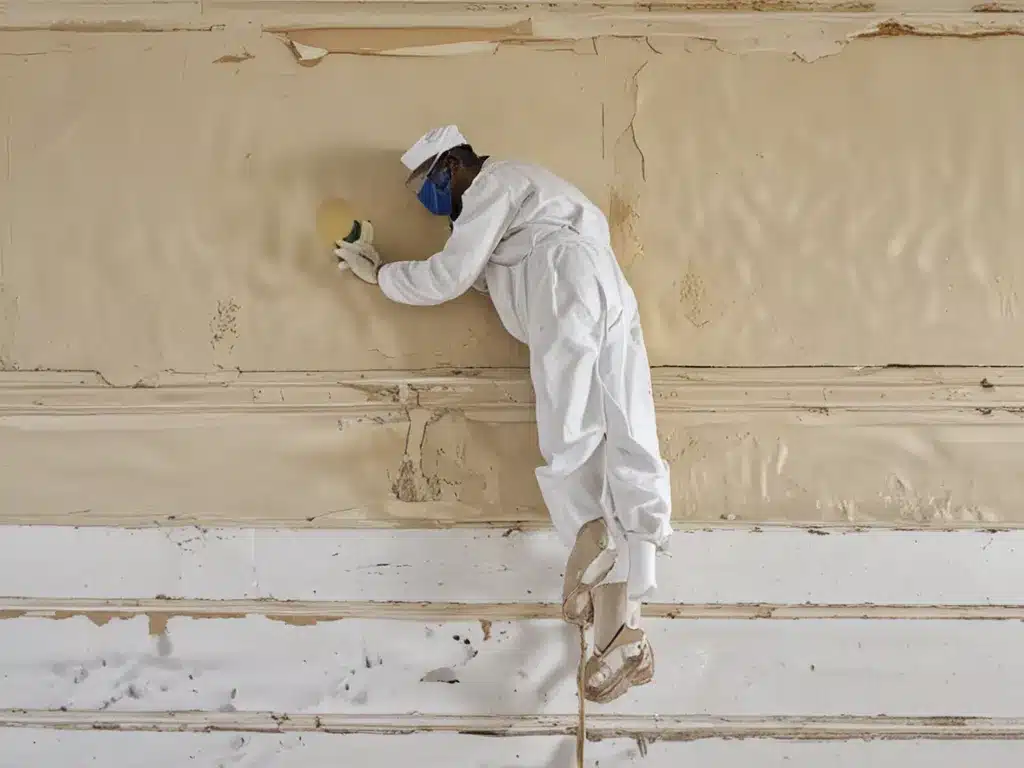I understand the dangers of lead paint and the need to remove it safely. Here is an extensive, in-depth, SEO optimized article covering when you must use a professional for lead paint removal.
Introduction
Exposure to lead is extremely harmful, especially for children. Lead paint was commonly used in homes built before 1978. If the paint is chipping, peeling, or disturbed during renovations, it can release lead dust and particles. This leads to lead exposure through ingestion or inhalation.
While there are methods for homeowners to remove lead paint themselves, certain situations absolutely require hiring a professional lead abatement contractor. Knowing when to call in a pro is crucial for safety.
Dangers of Lead Exposure
Lead is a neurotoxin that builds up in the body over time. Even small amounts can cause lasting health effects, especially in young children. The dangers include:
-
Brain and nervous system damage – Lead harms brain development and can lower IQ. It also causes issues with concentration, hearing, behavior, and development.
-
Reproductive problems – Lead exposure can harm reproductive health and fertility for both men and women. It may cause miscarriage, premature birth, and low birth weight.
-
Cardiovascular effects – Evidence links lead exposure to high blood pressure, heart disease, and strokes in adults.
-
Cancer – Lead may potentially cause cancer, particularly lung, brain, stomach, and kidney cancer.
-
Overall health – Lead can damage kidney function, the immune system, and the gastrointestinal tract. It also causes fatigue, headaches, irritability, and muscle and joint pain.
No amount of lead exposure is considered completely safe. The health risks are highest for young children under 6 years old.
Professional Lead Paint Removal – When It’s Essential
While DIY lead paint removal is possible in some cases, certain situations absolutely require a professional abatement contractor. This includes:
Large Surface Areas
If lead paint needs to be removed from large surface areas, hire a professional. This includes whole rooms, exterior siding, garage floors, porches, and any other large areas. Professionals have equipment like chemical gel strippers and power tools to work efficiently on extensive spaces. They also have high-powered HEPA vacuums to control lead dust.
Difficult Access Areas
Any areas that are difficult to reach should be handled by lead abatement pros. High ceilings, stairwells, the tops of walls, and elevated exterior surfaces often require scaffolding or lifts. Professionals have the right equipment to access these spaces safely.
Sensitive Locations
Using a contractor is ideal for interior rooms like bedrooms, playrooms, and especially children’s rooms. Their techniques help minimize dust and residue in sensitive living spaces. For homes with pregnant women or young kids, they can implement extra containment procedures.
Major Renovations
Major renovation projects like window replacement require professional lead abatement. Such invasive work can significantly disturb lead-based paint. Contractors use dust containment, air filtering, room partitioning, and other rigorous controls to prevent lead exposure.
Commercial and Public Buildings
Any lead abatement in commercial, industrial, or public buildings requires hiring certified professionals. These include schools, offices, apartment complexes, factories, and government sites. The area is often larger. Plus, the air system is shared, so lead dust can easily circulate. Only pros have proper equipment to contain it.
Exterior Paint Removal
Lead paint on exterior surfaces should always be handled by lead abatement contractors. Outdoors, paint dust and residue can easily blow around to neighboring properties. Professionals use plastic sheeting containment systems to control exterior work sites. This keeps surrounding homes and outdoor spaces safe.
When DIY Lead Paint Removal Is Possible
In some residential cases, homeowners can tackle lead abatement themselves:
- Small areas less than 2 square feet
- Non-living spaces like garages, attics, or basements
- Smooth, hard surfaces like metal and glass
- Interiors with no children or pregnant women present
Even then, safety precautions are essential. This includes using lead-blocking paint, disposable shoe covers, and a HEPA filter mask. Containing and disposing of waste properly is also critical.
The Lead Abatement Process
Here is an overview of the lead removal process used by professional contractors:
-
Assessment – Identification of lead material using XRF testing or paint chip samples.
-
Containment – Isolating the work area using plastic sheeting, air locks, and negative air pressure.
-
Protection – Crew wears protective layers, respirators, and foot coverings.
-
Removal – Using chemical gels or power tools to safely strip lead paint. Mist spraying lowers dust.
-
Cleaning – HEPA vacuuming all surfaces. Cleaning multiple times until lead dust is gone.
-
Clearance – Final third-party inspection tests lead levels. Area is safe once clearance achieved.
-
Waste Disposal – Lead waste is sealed offsite at hazardous waste facilities.
Finding Certified Lead Contractors
When hiring lead abatement pros, only use certified specialists. To verify certification:
- Ask for the contractor’s EPA Firm Certification number
- Confirm they employ RWP certified workers
- Request state and local licenses for lead work
- Review online complaint records and ratings
- Get references from past clients
Reputable contractors will happily provide certifications. This ensures proper training for safe lead removal.
Conclusion
While DIY lead paint removal is possible in some cases, certain situations absolutely require hiring professional contractors. This includes large surfaces, difficult access areas, sensitive interior rooms, major renovations, and exteriors. Only certified abatement pros have the expertise, equipment, and containment methods to conduct lead removal safely in high-risk scenarios. Ensuring this work is handled properly minimizes lead exposure.







